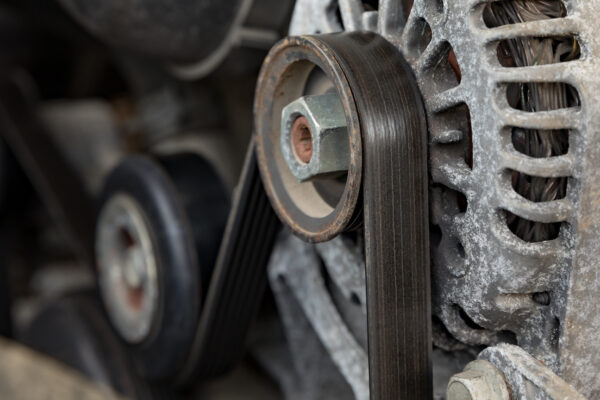Detecting the Symptoms of a Worn-Out Timing Belt: Safeguarding Engine Performance and Longevity

The timing belt in your vehicle is a critical component responsible for maintaining precise synchronization between the engine’s valves and pistons. As this rubber belt ages, wear and tear can occur, potentially leading to severe engine damage if not addressed promptly.
Here are the main symptoms to look out for
- High-Pitched Whining Noise: A distinct high-pitched whining or squealing noise coming from the engine compartment is often a primary indication of a worn-out timing belt. This noise is caused by increased friction as the aging belt struggles to maintain proper tension. If you hear this sound while driving or starting your car, have the timing belt inspected immediately.
- Engine Misfire or Rough Idling: A worn-out timing belt can disrupt the precise timing between the engine’s valves and pistons. This can result in engine misfires, a rough idling sensation, or a lack of smooth power delivery. If you experience these symptoms, it is advisable to seek professional inspection and potential replacement of the timing belt.
- Difficulty Starting the Engine: Starting the engine may become increasingly challenging with a worn-out timing belt. As the belt ages, it can lose its tension or develop visible signs of wear, such as fraying or stripped teeth. This can lead to improper timing and make it harder for the engine to start smoothly. If you encounter prolonged cranking, a sluggish start, or the engine fails to start altogether, have the timing belt assessed and replaced if necessary.
- Visible Cracks or Abrasions: Performing a visual inspection of the timing belt can provide valuable insights. Look for visible cracks, abrasions, or signs of significant wear. These visual cues indicate that the belt is nearing the end of its lifespan and requires immediate replacement. Regular inspections or seeking guidance from a professional during routine maintenance can help detect these signs early on, preventing potential engine damage.
- Engine Overheating: A worn-out timing belt can contribute to engine overheating. When the belt loses its proper alignment or skips a tooth, it disrupts the engine’s cooling system. This interference can impede adequate cooling and result in recurrent instances of engine overheating. If you observe abnormally high engine temperatures or frequent overheating episodes, investigate the condition of your timing belt as a potential cause.
Recognizing these symptoms is crucial for protecting your engine’s performance and longevity. Regular inspections, adherence to manufacturer recommendations for timing belt replacement intervals, and timely response to signs of wear or damage are essential for maintaining optimal engine health. If you suspect a worn-out timing belt, seek professional assistance from a trusted mechanic who can evaluate its condition and carry out the necessary replacement. By addressing a worn-out timing belt promptly, you safeguard the smooth and reliable operation of your engine, preventing potentially costly repairs in the future.

